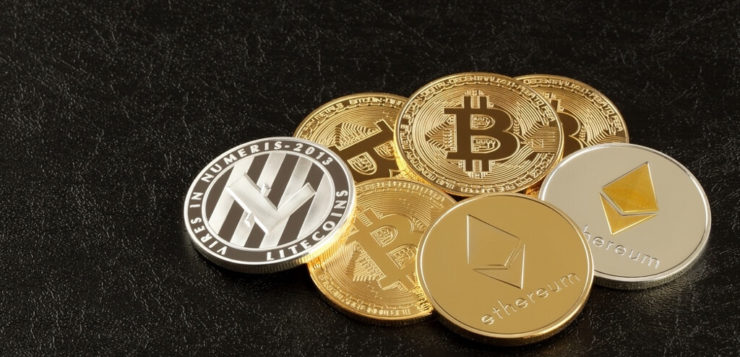Cryptocurrencies are used widely, but are yet to hit the mainstream.
Bitcoin turned ten on 3rd January 2019. But, a decade after Satoshi Nakamoto mined the ‘genesis block of bitcoin’ and made a momentous step towards bringing cryptocurrency to wider public knowledge, how has it fared?
Highs and lows
In the last decade, bitcoin has endured the substantial highs and lows of any innovation; whether in terms of security issues, competitors and dramatically fluctuating levels of demand.
All of which have contributed to blockchain and bitcoin, and to an extent alternative forms of cryptocurrency, reaching the popular consciousness. By the end of 2019, few people will be left scratching their heads at the word bitcoin.
Unfortunately, this may also be because they have heard about victims of fraudulent scams or because they read the story of the unfortunate Derek Cotton, founder of QuadrigaCX, who died in sole possession of the key to access $190m of client money.
There are many critics of cryptocurrency, including Nobel Prize winner Joseph Stiglitz, who said it lacks the transparency necessary to address issues of efficiency in the global economy, as well as the Indian government who is reportedly contemplating a ban on cryptocurrencies.
Strengthening crypto
Efforts to address the perceived weaknesses of cryptocurrencies have not always been successful. Stablecoins – coins pegged to fiat currencies or exchange traded commodities – were minted in an effort to address volatility issues, but maintaining the peg has proved problematic.
Binance, the world’s largest crypto exchange by volume, was the victim of a hack in which 7,000 BTC (worth approximately $40 million) was stolen. Shortly afterwards Binance’s CEO, Changpang Zhao, mooted the idea of forking the fraudulent transactions and redistributing the stolen coins to miners.
However, it was perceived that this would damage the credibility of bitcoin as it goes to the heart of the immutability of the blockchain.
However, cryptocurrencies will not just disappear in the face of cynicism from the general public and the regulators. Part of the continuing appeal has been the ability for them to evolve away from currencies, with a huge number of tokens with different characteristics that are not solely monetary.
We now talk of assets instead of currencies, and a number of those tokens have a recognisable value or use without the associated financial risk.
Central banks, such as the Bank of England, have dedicated teams considering the issues associated with cryptoassets. The Bank, HM Treasury and the Financial Conduct Authority formed the Cryptoasset Taskforce, assessing the risks and benefits of cryptoassets and its platforms.
The Bank of England’s current view is that cryptoassets do not, as of now, represent a risk to the monetary or financial stability of the UK, although they do pose risks to investors.
In 2014, the Bank of England published a bulletin called Economics of Digital Currencies, concluding that it was ‘extremely unlikely’ that cryptocurrencies would achieve widespread usage.
As the paper states, cryptocurrencies have value because the trading participants agree that it does. Perhaps that goes to the root of the problem cryptocurrencies have with winning the public’s literal buy-in.
Widespread adoption?
Jamie Dimon, CEO of JP Morgan, said he did not care about “fraud” cryptocurrency. Yet, in February, JP Morgan announced the launch of its own “digital coin representing a fiat currency”, JPM Coin. As the first US bank to do so, JP Morgan appears to be something of a pioneer.
However, this is not the big bank adoption that it appears to be. The current purpose of the coin is to internally settle payments between the bank’s clients. Each coin will represent one US dollar, rather than having its own value.
As a private JP Morgan-only operated blockchain, the infrastructure lacks the distributed, third party verified characteristics that identifies a blockchain.
The better take up continues to be with the blockchain, or DLT in general. Its secure and verified characteristics appeal to our human nature and there are immediately identifiable uses.
It is much easier to answer the question of “why do we need it?” with supply chain management, medical records and shareholdings and fundraising as they are all perfectly suited to, and improved by, the blockchain architecture.
Japanese banks are also working hard to create an efficient, blockchain-based payment system in advance of the Tokyo Olympics in 2025 due to fears that the existing Japanese financial system is poorly placed to cope with the anticipated demand.
So, 10 years on, we are still not at a point where digital currencies (note, not digital assets) have universal appeal. Nonetheless, the evolution to more than just an alternative form of currency is perfectly in tune with the innovative thoughts of the creators of bitcoin and other cryptocurrencies.
These kinds of ‘free’, useful tokens have some attraction. The real smart money though is on the blockchain use-cases.
Author: Sam Pearse
Read more at: https://minutehack.com/opinions/cryptocurrency-is-10-years-old-but-has-it-really-grown-up







